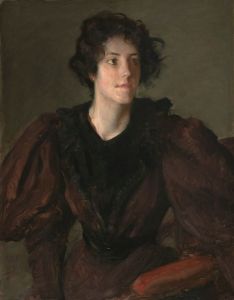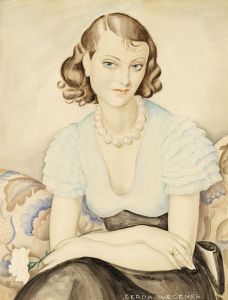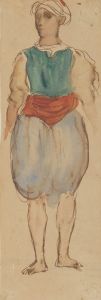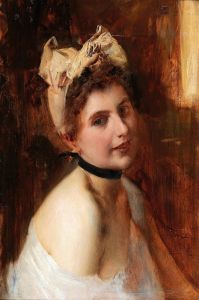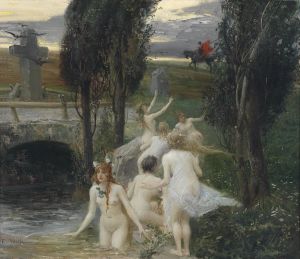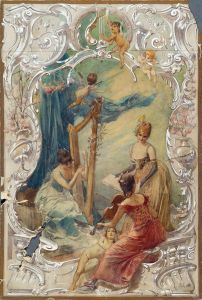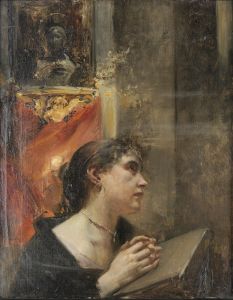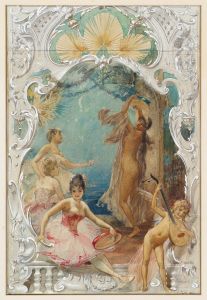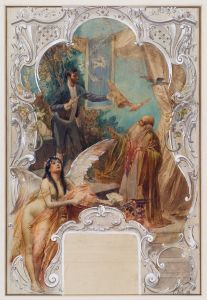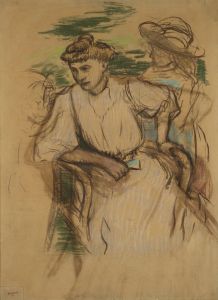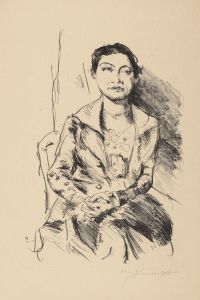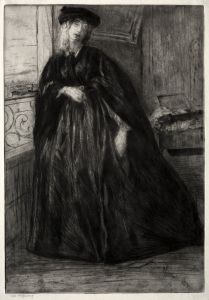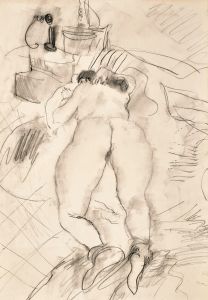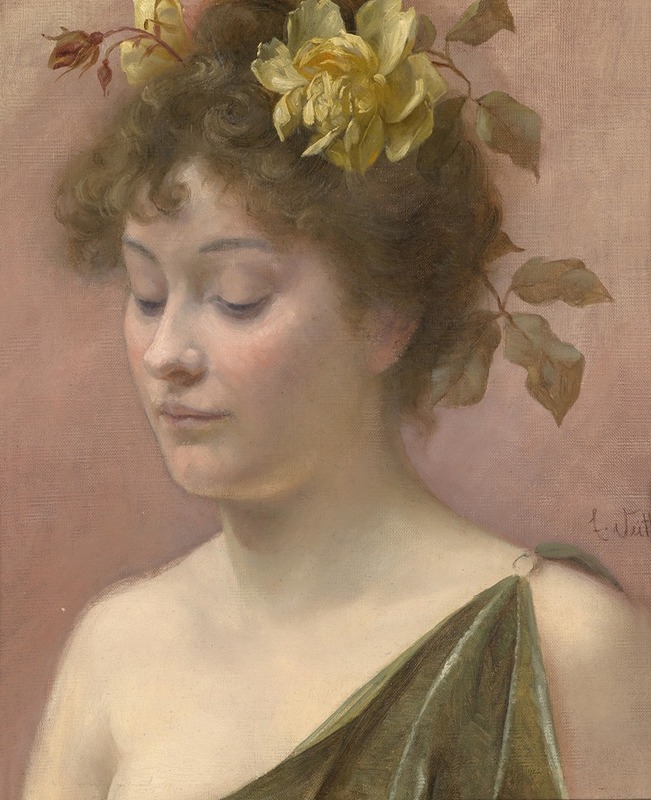
Portrait einer jungen Frau
A hand-painted replica of Eduard Veith’s masterpiece Portrait einer jungen Frau, meticulously crafted by professional artists to capture the true essence of the original. Each piece is created with museum-quality canvas and rare mineral pigments, carefully painted by experienced artists with delicate brushstrokes and rich, layered colors to perfectly recreate the texture of the original artwork. Unlike machine-printed reproductions, this hand-painted version brings the painting to life, infused with the artist’s emotions and skill in every stroke. Whether for personal collection or home decoration, it instantly elevates the artistic atmosphere of any space.
Eduard Veith was an Austrian painter known for his contributions to portrait and genre painting during the late 19th and early 20th centuries. Born on March 30, 1858, in Neutitschein, Austrian Silesia (now Nový Jičín, Czech Republic), Veith developed a keen interest in art from an early age. He pursued his studies at the Academy of Fine Arts in Vienna, where he honed his skills and became part of the vibrant artistic community of the time.
Veith's work is characterized by its attention to detail and the ability to capture the essence of his subjects, often portraying them with a sense of elegance and grace. His paintings frequently reflect the influence of the Viennese Secession, an art movement that sought to break away from traditional academic art and embraced modernist ideas.
"Portrait einer jungen Frau" (Portrait of a Young Woman) is one of Veith's notable works, exemplifying his skill in portraiture. While specific details about this particular painting are scarce, it is consistent with Veith's style, which often features a delicate interplay of light and shadow, bringing out the subtleties of the subject's expression and attire. The painting likely captures the fashion and sensibilities of the time, reflecting the cultural milieu of Vienna during the late 19th century.
Veith's portraits are known for their psychological depth, often conveying the inner life of the subject through subtle facial expressions and posture. This approach aligns with the broader trends in portraiture during this period, where artists sought to move beyond mere physical likeness to explore the character and emotions of their subjects.
Throughout his career, Veith received numerous commissions from the Viennese bourgeoisie and aristocracy, which helped establish his reputation as a leading portrait artist of his time. His ability to depict his subjects with both realism and a touch of idealization made his work highly sought after.
In addition to portraits, Veith also created genre scenes and murals, contributing to various public and private projects. His work was exhibited in several prestigious art exhibitions, further cementing his status in the art world.
Eduard Veith passed away on March 18, 1925, in Vienna, leaving behind a legacy of artworks that continue to be appreciated for their technical skill and artistic sensitivity. His paintings remain part of various public and private collections, offering insight into the cultural and artistic landscape of his era.
While "Portrait einer jungen Frau" may not be as widely recognized as some of his other works, it remains an example of Veith's ability to capture the beauty and complexity of his subjects, reflecting the broader artistic trends of his time.





